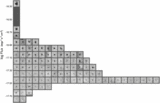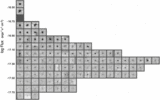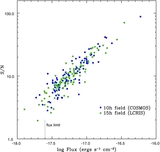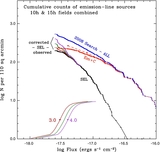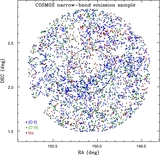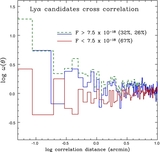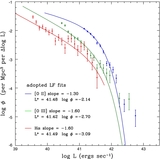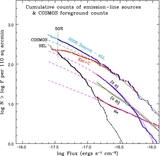Image Details
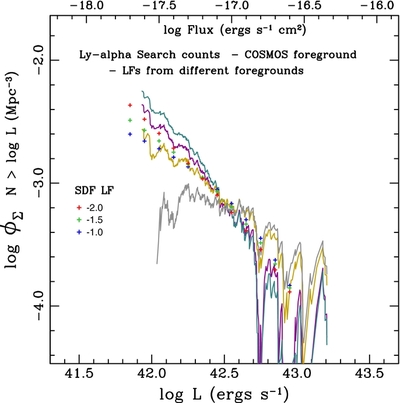
Caption: Figure 11.
Same as Figure 10, but for shallower and steeper Schechter-function slopes for the foreground populations. The magenta line is the LF derived for the nominal slopes shown in Figure 10, which approximately matches the extrapolated Subaru Deep Field LAE counts with a slope α LAE ≈ −2.0. The LF above (turquoise) has the nominal [O iii] and Hα slopes but the −1σ shallower [O ii] slope of −1.05 (see Figure 8), which leads to a steeper LAE LF with α LAE ≈ −2.5. Steeper slopes of the nominal foreground fits, − 1.50, −1.65, and −1.65 ([O ii] , [O iii] , Hα (see the text) produce the shallower LAE LF (gold line) with α LAE ≈ −1.3. Within this range of foreground fits the basic result of a rising LAE LF is maintained. However, steepening the foreground population slopes further to −1.70, −1.70, and −1.70 makes the rising LAE LF disappear (gray line), in fact, there are no added LAEs fainter than F = 10 −17 erg s −1 cm −2. As explained in the text, there are reasons to be dubious of this model, including its inconsistency with the brighter LAE LF of SDF, the angular correlation results of Section 5.2, and the "fine tuning" it requires.
Copyright and Terms & Conditions
© 2011. The American Astronomical Society. All rights reserved.


